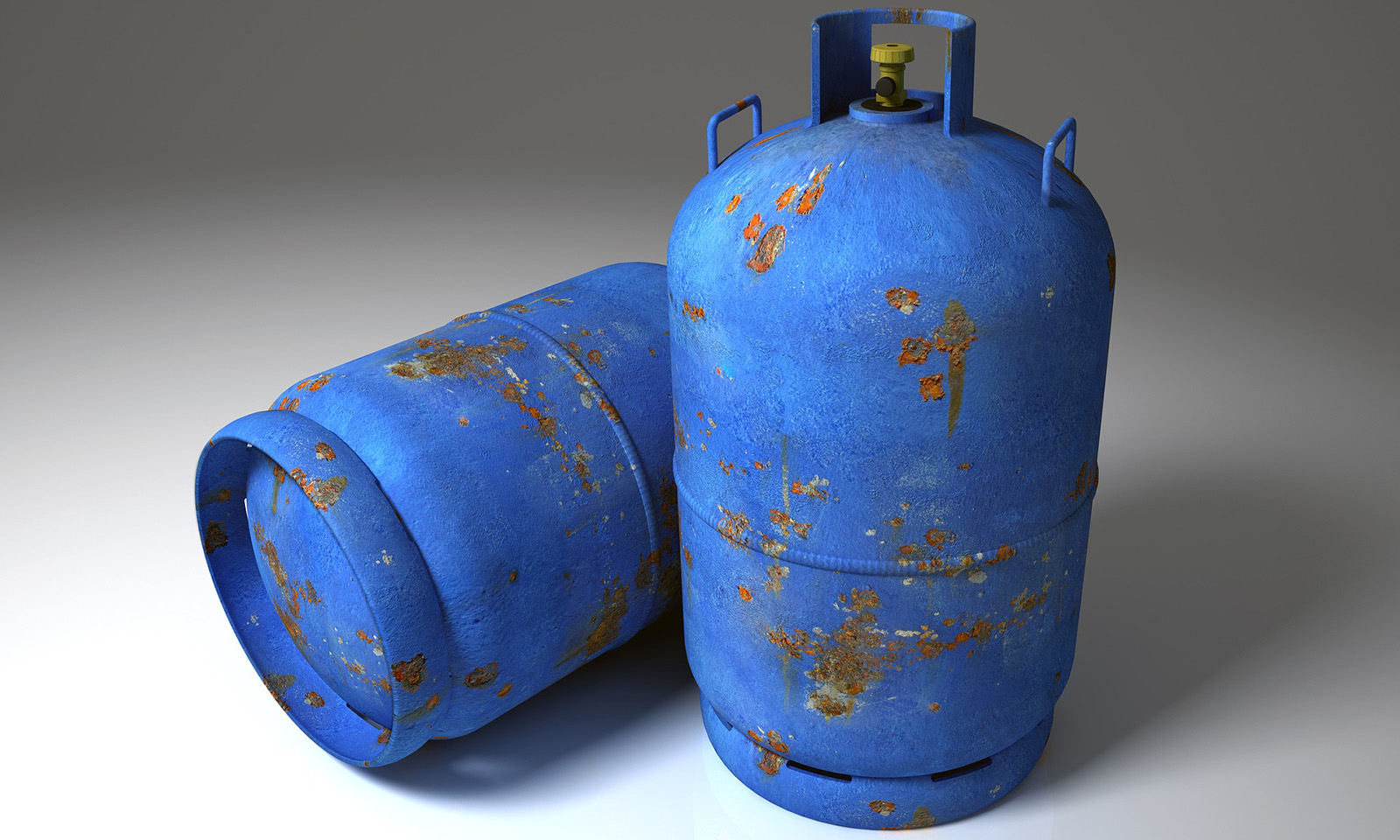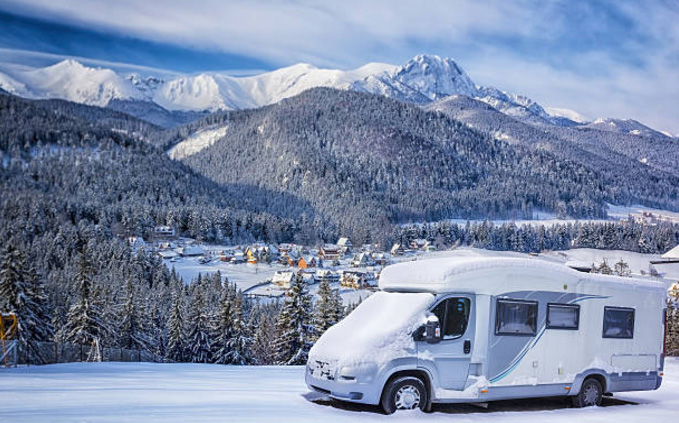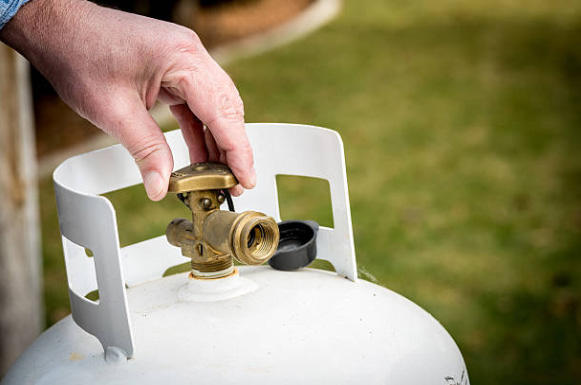
Pensi di fare campeggio invernale o in montagna? Alcune delle nostre dritte su come affrontare le temperature rigide le trovi in quest’altro articolo. Le bombole del gas sul camper a temperature molto basse possono creare problemi ed inconvenienti. In caso di temperature molto rigide, ben sotto lo zero, per non avere problemi con l’impianto del gas è meglio scegliere bombole con miscela ad alta percentuale di propano.
Camper e bombole del gas in inverno
Può capitare che in inverno si blocchi il riscaldamento a gas del nostro camper, se utilizzato in ambienti con climi particolarmente freddi, con il rischio di passare la notte al freddo. Capita anche che le bombole “finiscano” prima, creando lo stesso disagio.
Vediamo il perché e come evitare eventuali problemi, ricordando che quando si parla di gas parliamo di un elemento molto pericoloso, e il fai-da-te è assolutamente sconsigliato: rivolgetevi pertanto sempre a professionisti in grado di installare le appropriate apparecchiature in sicurezza e a norma di legge
Quali tipi di gas sono contenuti nelle bombole dei camper?
Il gas contenuto nelle bombole dei nostri camper è genericamente definito GPL (Gas di Petrolio Liquefatti ; in realtà si tratta di miscele di diversi tipi di gas, propano e butano, in diverse percentuali.
Le miscele con alta percentuale di propano sono maggiormente indicate per chi utilizza il camper nei periodi dell’anno più freddi perché questo gas ha il punto di evaporazione a circa -40 celsius: questo significa che, in sostanza, anche a temperatura ben oltre sottozero riesce a gasificare.
Il butano, invece, ha una temperatura di evaporazione che si aggira intorno a -1°C: di conseguenza, in caso di temperature molto al di sotto dello zero, non riesce a gasificare. Si corre il rischio che miscele con alta percentuale di butano non gassifichino, congelando di conseguenza il riduttore di pressione e rendendo inutilizzabili tutti i dispositivi ad esso collegati (stufa e piano di cottura).
Come si può riconoscere quale tipo di gas è contenuto nelle bombole?
Le bombole in commercio dovrebbero essere classificate in base al tipo di miscela contenuta, con una colorazione diversa del sigillo in plastica a protezione della filettatura (il colore della bombola è ininfluente).
Ti è piaciuto questo articolo? Lascia il tuo 'Like' cliccando sul pulsante!
In inverno sarebbe quindi da preferire una miscela a maggiore contenuto di propano o, meglio ancora, 100% propano.
Esistono anche in commercio riscaldatori del gas che consentono di evitare blocchi all’impianto del gas durante la stagione fredda dovuti al congelamento del regolatore.
Nota dell’autore:
Le informazioni contenute in questo articolo costituiscono i risultati della mia ricerca su Internet, motivata dalla mia stessa incertezza come camperista principiante su questa tematica. Sono stati gentilmente rivisti e verificati dalla Redazione di GENIUS CAMPING MAGAZINE. La mia intenzione nello scrivere questo articolo è di dare risposte immediate per aiutare in modo veloce e semplice chi nutre i miei stessi dubbi.
Ti è piaciuto questo articolo? Lascia il tuo 'Like' cliccando sul pulsante!
English Version
Motor Homes and Gas Bottles for Winter Camping
Thinking of spending a holiday in your motor home in the winter or up in the snow-clad mountains? The gas bottles on board our motor home can cause problems at very low temperatures, especially when they drop well below zero degrees C. The best way to avoid this is to choose gas bottles containing a high percentage of propane gas.
If we use a gas heating system in our motor home where the ambient, climatic temperature is particularly low, there is a risk of malfunctioning and of having to spend a night in the cold. It also happens that the bottles prematurely run out of gas, thus creating the same discomfort.
Let us have a look at why this is so and how we can avoid such inconveniences, bearing in mind that we are talking about gas, which is a very hazardous substance, and that do-it-yourself actions are extremely inadvisable. Hence, always get the assistance of a professional, appropriately equipped to install your system in accordance with the legal safety regulations.
What types of gas are contained in the gas bottles of our motor homes?
The gas contained in the gas bottles of our campers is generally defined as LPG (Liquefied Petroleum Gas); in fact, it is a mixture of different types of gas, made up of various percentages of propane gas and butane gas.
Those mixtures containing a high percentage of propane gas are more advisable for usage in motor homes in the colder periods of the year because the evaporation point of this gas is around minus 40 degrees C. This means that it is still able to gasify even at temperatures well below zero C.
On the other hand, butane gas evaporates at about minus 1 degree C, which means that, at temperatures well below zero C, it is no longer able to gasify. Thus, the pressure reducer freezes, which makes it impossible to use any other devices connected to it (e.g. the gas heater and the gas rings of the cooker.
How can you recognize what type of gas is contained in the gas bottles?
Commercially available gas bottles are classified according to the composition of the mixture contained and should be distinguishable by the colour of the plastic cap that seals the screw opening of the gas bottle (the colour of the bottle itself is irrelevant).
Ti è piaciuto questo articolo? Lascia il tuo 'Like' cliccando sul pulsante!
Hence, in winter, it would be preferable to choose a mixture containing a high percentage of or, even better, 100% propane gas.
You can also buy gas heaters that enable you to avoid the malfunctioning of the gas heating system due to the freezing of the pressure regulator during the cold season.
Note:
The above information represents the results of my research on the Internet, which was motivated by my own uncertainty as a newcomer to the world of motor home camping concerning this topic. The information has been kindly checked and edited by the editorial team of GENIUS CAMPING MAGAZINE. My intention in writing this article is to give immediate answers, providing quick and easy assistance for anyone with the same uncertainties in this regard.
Ti è piaciuto questo articolo? Lascia il tuo 'Like' cliccando sul pulsante!







